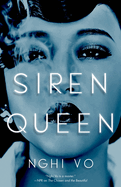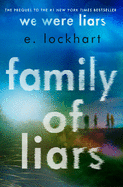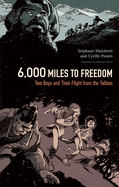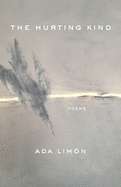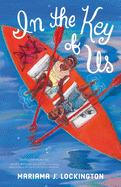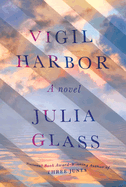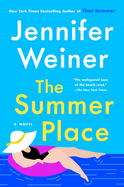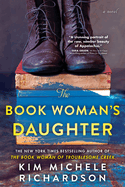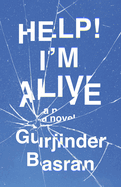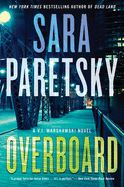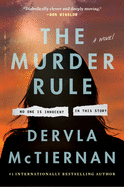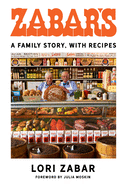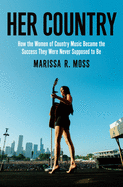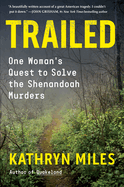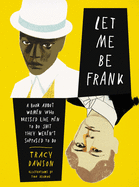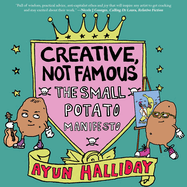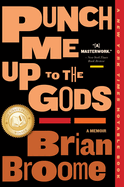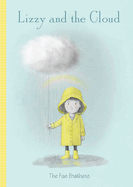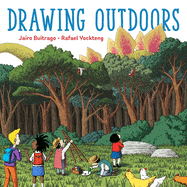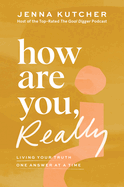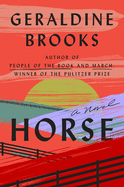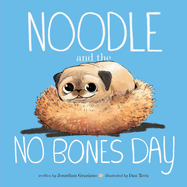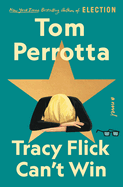Friday, May 13, 2022
This week, we review Nghi Vo's Siren Queen, the breathtaking follow-up to her debut, The Chosen and the Beautiful, in which magic and monsters permeate the world of Old Hollywood; Bad Actors, the farcically turbulent eighth entry in the Slough House series from Mick Herron; and Family of Liars, E. Lockhart's unforgettable prequel to We Were Liars; plus much more.
With the increase in book bannings across the country, we appreciate Dave Eggers, who's protesting the Rapid City, S.Dak., school board's decision to destroy titles on the English 12 syllabus. He's partnering with a local bookstore to supply the books directly to students.
Vigil Harbor
by Julia Glass
Brecht, a 22-year-old survivor of a New York City terrorist bombing, suggests a dreaded--and plausible--future: "The bar's going up on surviving what's to come." In Julia Glass's seventh novel, Vigil Harbor, the residents of a Massachusetts coastal community acknowledge that, a decade after the first Covid lockdown, "storms... no longer repay the ground they borrow." Yet as the sea rises, the engaging villagers' air of cautious resilience inspires hope.
As in Three Junes, I See You Everywhere and Glass's other novels, Vigil Harbor's humanity resonates in characters who narrate their stories in alternating chapters. Vigil Harbor feels normal, despite scenes of climate disasters and terrorism scrolling on screens. A group of parents capably home-school their kids; a respected Latino landscaper maintains properties, planting wind-resistant trees; and a renowned architect designs buildings that will withstand hurricanes. Small-town drama vies for attention with global issues when marital infidelity rocks the yacht club. When Ernesto Soltera, a charming but evasive visitor to the gardener's family, slowly raises suspicion and Petra Coyle, an out-of-town journalist, insinuates herself into village life, a growing sense of unease creeps into the saga. The suspense escalates, with the narrators' threads merging in a dramatic crisis.
Glass (And the Dark Sacred Night) includes conflicting climate-change extremists, like the "EndTimer Party," yet projects optimism as villagers embrace the future. While the sea holds increasing threats, it also offers a hint of magic: a beautiful silver seal and an elusive, seductive woman swim in and out of the novel. Maybe a mythological selkie represents hope? --Cheryl McKeon, Book House of Stuyvesant Plaza, Albany, N.Y.
Discover: In a sobering yet hopeful novel set in the early 2030s, a New England village confronts climate change and political conflict with optimism and stoic loyalty to their community.
The Summer Place
by Jennifer Weiner
Jennifer Weiner (That Summer) brings readers a lighthearted family novel that makes for perfect beach reading in The Summer Place. Sarah Levy-Weinberg is appalled when her stepdaughter, Ruby, announces at the mere age of 22 that she's marrying Gabe, whom Sarah calls Ruby's "pandemic boyfriend." Sarah thought the forced proximity of lockdown would doom their relationship, but instead Ruby is determined to have a wedding on Cape Cod at a summer place Sarah's mother owns.
Fun and effervescent, The Summer Place is told from the perspectives of multiple characters, revealing scads of family secrets that the wedding fervor is bringing to light. Ruby and Gabe, as it turns out, aren't the only ones ruminating on love. Sarah is frustrated because working from home while schooling her sons was hard enough. Now her husband, Eli, distances himself from her, and she doesn't understand why--or how to get him truly to notice her again.
Sarah's twin brother, Sam, is mourning the loss of his wife and struggling as a single parent. And Sam and Sarah's mother, the famous novelist Veronica Levy, spends her summer thinking wistfully of her late husband and her own youthful peccadilloes as she prepares her home to host Ruby's wedding. Exploring the effects of pandemic proximity on close relationships, Weiner ably captures the tense vibes of the last few years but combines them with a beachy breeziness, which results in an extremely engaging novel sure to appeal to fans of Elin Hilderbrand or Liane Moriarty. --Jessica Howard, freelance book reviewer
Discover: An unexpected wedding leads to several generations of family drama in this lighthearted summer read.
The Partition
by Don Lee
For readers to whom Don Lee (Lonesome Lies Before Us) is a new author, The Partition is the perfect place to start. Lee, the author of four novels and a collection of short stories, transports readers around the world in this short story collection, which shines a light into the nooks and crannies of contemporary life and Asian American experiences.
Not only are these nine stories illuminating, but they are told in fine prose, clear and full of precise details, such as the intricacies of Baltimore or the after-party of a low-budget film premiere. They examine numerous contentious individual lives and social scenes with clarity and a light touch, never straying into the realm of treatise. It is a rare kind of fiction-writing that can address hot-button contemporary issues with elegance and authority, stories that reveal and challenge conventional assumptions without simplification or feeble provocation. At the heart of every story is a compelling human life. In "UFOs," a young local newscaster struggles to achieve career success and self-respect. The striving academic in "The Partition" seeks to regain her tenure-track status even as racism, sexism and a backfiring professional gamble seem to deny it at the last minute. And in "Commis," a young woman returns home to help her parents close their family restaurant, destroyed by Covid-19. Lee's stories depict people oscillating between alienation and social connection with plenty of human gyrations along the way.
All characters in The Partition are breathing, sweating, suffering and mistake-making people who, like everyone, are doing the best they can with what they have. --Walker Minot, teacher, freelance writer and reviewer
Discover: Don Lee's second collection of short stories spans several continents and the inner and social lives of many characters, exploring the intricacies, joys and sorrows of Asian American lives.
The Book Woman's Daughter
by Kim Michele Richardson
"Bringing the written word to others would keep me free," insists Honey Lovett, the titular character of The Book Woman's Daughter, the sequel to The Book Woman of Troublesome Creek by Kim Michele Richardson. But Honey--the last of the "Blues," descended from the French with a genetic trait that causes blue skin--knows well the Kentucky backwoods version of justice that imprisoned her parents for miscegenation. In the 1950s, it "don't take much for a Blue" to be "a target for cruel folks."
Honey, on her own at nearly 17, applies for her Mama's Pack Horse librarian position when it reopens. As a legal orphan--even an employed one--she could be sent to the brutal Kentucky House of Reform. Honey clings to her freedom, armed with her Mama's grit and her ornery but loyal mule, Junia, who knows the paths to the hill folks, eager for books. The contrast of the dominant American culture in the 1950s and the norms of the "grandmother mountains" is stark. Honey delivers magazines, is introduced to popular music on 45 rpm records and learns to use a pay telephone. But chauvinism and corruption run deep in "ol' 'Tucky land" for Honey and her new "sister" friends. One bucks tradition by working in the coal mines; another is a fire lookout. Longtime Troublesome Creek friends and a tenacious lawyer boost Honey's hopes, but the suspense heightens as ignorant unkindness and archaic laws threaten her future. Readers unfamiliar with Richardson's earlier novel will still enjoy this; she includes Mama's experiences in Honey's coming-of-age story, a gripping and cautiously optimistic tale. --Cheryl McKeon, Book House of Stuyvesant Plaza, Albany, N.Y.
Discover: The daughter of the protagonist of The Book Woman of Troublesome Creek takes over her Mama's route, delivering books in Kentucky and attempting to escape the cruelty perpetually aimed at her kin.
Jameela Green Ruins Everything
by Zarqa Nawaz
Set against the backdrop of current affairs in the Middle East, Zarqa Nawaz's Jameela Green Ruins Everything is a hilarious and clever dark comedy, featuring a protagonist with the ambitious goal of getting her debut memoir on the New York Times bestseller list--and she'll do anything to make it happen. Nawaz's action-packed, raucous plot finds lapsed Muslim Jameela Green caught up in a madcap rescue mission to Syria and brought into the core of a terrorist group known by its acronym, DICK.
Jameela lives in the fictional town of Liverspot, N.Dak., with her knitting-obsessed husband, Murray, and their preteen daughter, Lee Lee. When her book launch fails to go as planned, a dejected Jameela seeks spiritual guidance from Ibrahim, the new imam at her local mosque, convinced that an improved rapport with God will jumpstart her book sales. Ibrahim, misidentified by the CIA as a DICK sympathizer, is taken to Syria to be tortured. Jameela vows to rescue him, traveling undercover as a DICK operative. As if that isn't dangerous enough, resourceful Lee Lee follows her mother, having convinced the CIA to send her into a war zone as an underage agent.
Creator of the acclaimed television series Little Mosque on the Prairie, Canadian artist Nawaz (Laughing All the Way to the Mosque) successfully deploys incisive social satire to expose fundamental flaws in U.S. Middle East policy, the misplaced revenge-based narratives of terrorist groups and the unexpected truths that emerge when Jameela confronts her own essential humanity, the New York Times bestseller list all but forgotten. --Shahina Piyarali, reviewer
Discover: This cleverly plotted dark comedy features a debut author's international adventures in pursuit of literary fame.
Help! I'm Alive
by Gurjinder Basran
Help! I'm Alive, Gurjinder Basran's insightful, compelling third novel, captures the guilt, confusion and longing for connection that follow the death of a suburban teen. Four people narrate the story, each of whom was close to Jay, a boy who livestreamed footage of his death. While all four experience some of the same emotions--guilt, regret, grief--Jay's death leads them to examine their own lives through different lenses.
Conventionally popular Ash, Jay's former best friend from childhood, wonders if he's become as fake as the people around him. He gets to know Winona, Jay's sort-of-girlfriend, as they're repulsed by the immediate, performative outpouring of collective grief in their community. Troubled Winona talked about art and death with Jay so often that she didn't take him seriously and now finds herself more alone than ever. Ash's brother Anik, a music prodigy, has sequestered himself in his family's basement for months, trying to read his way to the meaning of life. Ash and Anik's mother, Pavan, reflects on Jay's childhood with her family, her own sons who now seem like strangers, and the love and energy she poured into those three relationships she has now lost.
Rather than exploiting suicide for character development, Basran (Everything Was Good-bye) opts to probe fractures in the oldest, closest relationships and the beautiful fragility of new ones. Each character is distinct, drawn with such detail that readers will find it easy to empathize with them. Help! I'm Alive is a masterful examination of what it means to be human, to hope and to connect. --Suzanne Krohn, librarian and freelance reviewer
Discover: A teen's suicide leads four people to search for connection and purpose in this propulsive, character-driven novel.
Mystery & Thriller
Bad Actors
by Mick Herron
Bad Actors, the farcically turbulent eighth entry in the Slough House series from Mick Herron (Dolphin Junction), finds the socially retrograde Jackson Lamb and his second-string MI5 underlings brazening and bumbling their way through another espionage thriller. It's more proof that, though there may be spy novels with sentences as impeccable as Herron's, it's unlikely there are spy novels that are also as funny.
This time around, Lamb is having his Slough House charges, known as the "slow horses," watch London's Russian embassy: What is Regent's Park current First Desk, Diana Taverner, doing at an event being held there? Meanwhile, a Regent's Park "string-puller" has asked former First Desk Claude Whelan, who's eyeing retirement like a kid at a candy store window, to investigate the disappearance of Dr. Sophie de Greer, a Swiss citizen hired as an adviser by 10 Downing Street. Might the intelligence service be involved in her disappearance? And what to make of the fact that the last call de Greer made from her mobile was apparently to Lamb?
Powered by exemplary prose ("String-pullers carry weight, but Diana carried scissors"), Bad Actors is a spy novel moonlighting as a comedy in which one of several scenes of derring-do finds a slow horse wielding a spork. Herron's wandering perspective allows readers to get to know each of the loose cannons under Lamb's unprofessional but not indifferent command. When Whelan tells Lamb at one point, "Slough House isn't a department. It's a psychiatric ward," Lamb is quick to return, "It's my psychiatric ward." --Nell Beram, author and freelance writer
Discover: The comically hammer-and-tongs espionage thriller, the eighth in the Slough House series, finds the MI5 second-stringers wondering what Regent's Park First Desk is doing at the Russian embassy.
Overboard
by Sara Paretsky
Overboard, the 21st novel in Sara Paretsky's venerable V.I. Warshawski series, finds the ageless private investigator still exercising, singing and fighting for justice (including the social kind) in the streets of Chicago. What's different this time is that she's doing it in "the Covid-verse," and the limits imposed by the virus steer the novel's plot in inspired ways.
The thriller begins with Warshawski's dog discovering the unconscious body of a teenage girl in the rocks by Lake Michigan, burn marks on the legs of her jeans. She has no supplies with her; did she intend to die in the rocks? Was she running from someone? Before anyone can learn the girl's identity, she disappears from the hospital where she's been recovering. The hospital hires a grateful Warshawski to look for her: "I'd kept going during the lockdown, but the economic contraction meant my clients hadn't outsourced as many queries as they used to." Or as Warshawski's lawyer puts it, "Your quixotism is charming, but it doesn't pay your bills."
The novel is intricate and involving, its latticework plot including an act of vandalism at a synagogue and encounters with people Warshawski grew up with in South Chicago. Although Paretsky (Fallout; Brush Back) employs a technological gizmo as a major plot point, Overboard offers the comforts of a throwback, enlisting classic PI-story motifs, such as disguises, heartless villains, escapes on foot and feats of physical daring. Would it even be a Warshawski novel without that last one? --Nell Beram, author and freelance writer
Discover: The limits imposed by Covid-19 inform the plot of the involving 21st V.I Warshawski thriller, which begins with the discovery of an unconscious teenage girl in the rocks by Lake Michigan.
The Murder Rule
by Dervla McTiernan
In the slow-burning, suspenseful thriller The Murder Rule by Dervla McTiernan, a brilliant law student, Hannah Rokeby, infiltrates a nonprofit legal team. They are bent on overturning the conviction of Michael Dandridge, the man who killed Hannah's father and raped her mother.
Hannah is a third-year law student at the University of Maine in 2019. She manipulates her way onto the law team of the University of Virginia's Innocence Project. The director of the team, Robert M. Parekh, becomes impressed by her craftiness. Hannah's motives are unclear, but diary entries from Laura Rokeby, Hannah's mother, shed light on her reasons. According to the diary, Dandridge killed Hannah's father and raped Laura 25 years ago. Local authorities didn't believe Laura, and Dandridge was never charged. Parekh believes Michael Dandridge was wrongly convicted of a different murder-rape, driving Hannah's urge to join Parekh's team. The team's only shot at a retrial is fast approaching; Parekh's legal professionals and law students are desperately seeking evidence to overturn Dandridge's conviction. Bolstered by her mother's narrative, Hannah is equally committed to stopping them from within. Neither Hannah nor Parekh are able to see the truth of what happened. Relationships will be ripped asunder and much blood will be spilled before the stunning conclusion.
In her first stand-alone thriller, McTiernan (The Ruin) takes inspiration from the real-life story of a law student who worked at the Innocence Project. The novel's version of events is filled with twists and turns aplenty and will keep readers engrossed all the way to the explosive finale. --Paul Dinh-McCrillis, freelance reviewer
Discover: A nonprofit legal team is determined to overturn the conviction of a murder-rapist, but the daughter of one of the victims does everything she can to keep him in prison.
Friend of the Devil
by Stephen Lloyd
Stephen Lloyd's Friend of the Devil offers a captivating blend of madcap mischief, terrifying and gory malevolence and thoughtful ruminations on humanity. Gruesome, deadly serious and frequently hilarious, this novel is an unusual cocktail.
Sam Gregory works as an inspector for an insurance company, responsible for rooting out fraud and solving cases like this one: a valuable antique book gone missing from the library of Danforth Putnam, a snooty boarding school on an island off the coast of Massachusetts. A war veteran with PTSD, Sam feels only a jaded weariness at the privileged antics of the students (and for that matter, the staff), but dutifully searches for the missing volume, sure there's nothing here but another case of a drug-addled teen or disgruntled employee.
Sam is so wrong. But on his way to shocking, elemental horrors, he will meet magnetic characters like the indomitable Harriet (D&D dungeon master, student journalist, extreme nerd and loyal friend) and bitter, acerbic Dale (a charity case at Danforth, which no one will ever let him forget). What haunts Danforth and its very special missing book will turn out to be seriously sinister, and by the time Sam approaches its true nature--supernatural, or simple human evil?--the stakes will be ultimate.
Lloyd, who is also a TV writer and producer (Modern Family; How I Met Your Mother), showcases a talent for description and rich sensory detail from the first pages, when readers meet the rarified denizens of Danforth. Friend of the Devil's unusual brand of gore and laughs is wildly, wickedly entertaining and positively unforgettable. --Julia Kastner, librarian and blogger at pagesofjulia
Discover: This singular novel of teenaged hijinks, a mysterious missing book, potentially profound evil and PTSD is wry, shockingly violent, philosophical and laugh-out-loud funny.
Science Fiction & Fantasy
Siren Queen
by Nghi Vo
Magic and monsters permeate the world of Old Hollywood in Siren Queen, the darkly enchanting second novel by author Nghi Vo.
In Luli Wei's world, Hollywood has a dark magic. The studio heads are monsters--some figuratively, some literally--who control the fate of their actors; demons call seductively from the shadows of film lots, luring the innocent into danger; blood pacts and ritual sacrifice are an accepted part of doing business; and when actors becomes stars, part of their essence shoots into the sky as new celestial bodies. Despite the dangers, Luli has longed to star in films since childhood: "from the first, I was possessed, poisoned to the core by ambition and desire." But for a queer Chinese American girl from a poor immigrant family, stardom is far from guaranteed, especially after she refuses the racist roles Hollywood presents. Navigating the dangers of her chosen career, she finds a role she understands: a vengeful siren.
Hugo Award-winning author Nghi Vo (The Chosen and the Beautiful) reimagines a recognizable time in American history by weaving magic into its roots to create a world in Siren Queen that is both familiar and enchanted. Her heroine is bold and brave, exploring first loves and self-identity while balancing her own ambition with the demands of her deadly employers. Vo packs the novel with themes of racism, queer identity, immigrant experience and the freedom to define one's own life and relationships, while maintaining a richly cultivated and dreamlike world. With lush imagery and a gorgeously rendered atmosphere worthy of its complex heroine, Siren Queen is magical realism at its most beautiful and intoxicating. --Jennifer Oleinik, freelance writer and editor
Discover: An aspiring actress faces mythic beasts and human oppression in this enchanting and richly imagined fiction of Old Hollywood, steeped in dark folklore and magic.
Graphic Books
6,000 Miles to Freedom: Two Boys and Their Flight from the Taliban
by Stéphane Marchetti, illus. by Cyrille Pomès, transl. by Hannah Chute
The title 6,000 Miles to Freedom: Two Boys and Their Flight from the Taliban is an apt distillation of the stunning graphic odyssey it entails. Author/director Stéphane Marchetti adapts the striking narrative from his 2017 documentary with Thomas Dandois, Les enfants de la jungle, illuminating the wrenching experiences of two refugee boys. Award-winning comics artist Cyrille Pomès infuses every panel with the dynamic motion of their flight. And versatile Hannah Chute, fast becoming a go-to translator of graphic works, deftly enables French-to-English access.
Adel, 12, and his 16-year-old cousin, Shafi, steal moments of unrestrained joy in a ragtag game of cricket, despite the surrounding destruction in war-torn Afghanistan. Tragedy is unavoidable: Adel's father dies. Then his uncle marries his mother and sends an unwilling Adel to a madrasa where the youngest are recruited for martyrdom. When Adel's suicide bombing mission fails, the Taliban and the Afghan police make it impossible for him to return home. He and Shafi flee; horrors and kindness define their 6,000 miles toward freedom.
Testimonies from refugee youth inform Marchetti's story, its timely urgency inspiring a reading in one sitting. Pomès wields blocks of muted earth tones, as if reminders to stay earthbound, stay alive and eschew the fundamentalist declarations of martyred heaven. His phenomenal panels capture the journey from Afghanistan to the Pakistan/Iran border (green-tinged browns), into Europe (evergreens) and then to the open water to make it to France's Calais Jungle refugee camp (grayish blues), all leading to the possibility of a new life (a reddish-brown palette). Human survival proves remarkable, perhaps even more so through the resilience of young people. --Terry Hong, Smithsonian BookDragon
Discover: Stéphane Marchetti transforms his 2017 documentary about refugee youth into an exhilarating graphic novel about two cousins fleeing war-torn Afghanistan.
Biography & Memoir
Zabar's: A Family Story, with Recipes
by Lori Zabar
Lori Zabar--granddaughter of Louis and Lilly Zabar, the founders of iconic New York City food store Zabar's--died in February 2022. The posthumous publication of her Zabar's: A Family Story, with Recipes makes for a touching and well-researched paean to the Zabar family. This is a love letter to a family and the business empire they created; it encompasses a history of Ukrainian pogroms in the early 20th century, an exploration of the New York City grocery industry in the 1940s, a discussion of the exploding gastronomic scene in the 1970s, with family stories and photographs deftly woven throughout.
When Louis and Lilly separately fled their hometown of Ostropolia, Ukraine, after a wave of brutal violence against Jews after World War I, they never imagined they were taking the first steps toward a legendary dynasty. They reconnected in New York City, and--thanks to Louis's acumen--their business progressed, by the 1940s, from vegetable stand to fish counter to appetizing store.
To this day, the counters of Zabar's are staffed by third- and fourth-generation Zabars, who love the vitality of the family business. Deliberately chaotic and busy, Zabar's has always been on the cutting edge of food trends and helped lead a gastronomic revolution in New York City in the 1970s. Often lauded in film and books, Zabar's legacy extends far beyond the confines of NYC. With wonderful photos of relatives over the years and many of Lilly's recipes included, Zabar's: A Family Story, with Recipes is a beguiling stroll through New York history--and a fascinating glimpse into an ambitious family. --Jessica Howard, freelance book reviewer
Discover: This wonderfully informative memoir explores the Zabar family legacy and the history of the iconic New York City food store.
Her Country: How the Women of Country Music Became the Success They Were Never Supposed to Be
by Marissa R. Moss
Women have long been a mainstay of country music, but they've been all but pushed out of radio play--and elbowed aside in other spaces--over the last 20 years. In her debut, Her Country, veteran music journalist Marissa R. Moss calls out the mostly white, straight and male institution of Nashville country music for its blatant bias, and she charts the gutsy trajectories of female artists blazing a new path for themselves and other women in the genre.
Moss begins her narrative in 1999 when Shania Twain, the Chicks (then known as the Dixie Chicks) and other female artists were riding high on the country charts. She details the genre's subsequent, deliberate turn away from female stars to all-male "bro country" and recounts the career challenges of artists like Kacey Musgraves, Maren Morris, Miranda Lambert and Mickey Guyton, all of whom had to make a way for themselves outside of the Nashville tradition. Moss unapologetically exposes the genre's baked-in sexism and racism, and highlights the courage and creativity of female singers, songwriters, producers and executives. She argues brilliantly for more diversity on country radio, more women in every part of the industry and more creative control for female artists. Her interview subjects share the grit required to make it in an industry that often shuts them out, and Moss herself celebrates their blatant refusal to "shut up and sing."
Her Country is a richly layered history of the last two decades in country music and a clarion call for the genre--and its stakeholders--to do better. --Katie Noah Gibson, blogger at Cakes, Tea and Dreams
Discover: Marissa R. Moss's debut celebrates several trailblazing female country stars and exposes the industry's blatant sexism and racism.
Social Science
Trailed: One Woman's Quest to Solve the Shenandoah Murders
by Kathryn Miles
The mystifying unsolved murders of two female backpackers in Virginia's Shenandoah National Park--and the revelation of other disturbing acts of violence toward women in U.S. national parks--is the obsessive focus of Trailed by journalist Kathryn Miles (Quakeland). In the early summer of 1996, two expert backcountry leaders in their 20s, Lollie Winans and Julie Williams, were in love and doing what they enjoyed most when a sadistic killer found their off-trail campsite adjacent to the Appalachian Trail. Despite a massive joint investigation by the FBI and National Park Service, the case remained unsolved for years.
In 2002, Miles was a professor at the Maine wilderness college Lollie had attended when the first capital case under the new post-9/11 federal hate crime legislation was announced against Darrell David Rice for their murders. When the case was dropped two years later, Miles became consumed by it and the many unanswered questions left in its wake. Was an innocent man's life ruined? Were other unsolved murders committed by the same individual who escaped justice? Miles pulls apart these disparate but interlocking threads in a haunting piece of journalistic reportage that includes the author's own struggles with the grim realities of her research: "Writing this book has taken every toll I feared it would." In Trailed, Miles brings Winans and Williams (and other female victims of backcountry violence) into tender human focus, while shining a light on deficient law enforcement practices that don't fully serve the people they are designed to protect. --Peggy Kurkowski, book reviewer and copywriter in Denver
Discover: A reporter investigates a double-murder cold case that raises vexing questions about the safety of women and queer people in and around the national park system.
Let Me Be Frank: A Book About Women Who Dressed Like Men to Do Shit They Weren't Supposed to Do
by Tracy Dawson
In 2013, television writer and actor Tracy Dawson was passed over for a job writing shows because they didn't have any "female needs." Naturally infuriated, she became interested in women over the centuries whose opportunities and options have been limited by their sex. From this curiosity is born Let Me Be Frank, in which Dawson profiles several dozen women from the 1400s BCE through the present. In a pithy, one-liner-laden style, she brings these remarkable and little-known histories to light with comedic flair.
Some of the women are classics: Joan of Arc, Kathrine Switzer and a chapter's worth of once-anonymous literary figures who are now household names (Jane Austen, Mary Shelley, the Brontës, George Sand). But the majority are more obscure: Hannah Snell, who served as a Royal Marine in the 1750s; Ellen Craft, who fled slavery in 1848 disguised as a white male slaveowner. A teenaged Dorothy Lawrence, rejected as a war correspondent in World War I, took herself to the front by boat, bicycle and soldier's garb. The 1890s entertainer and male impersonator Florence Hines, 1940s comic book creator Tarpé Mills and 1980s miner and entrepreneur Pili Hussein are among these diverse, colorful stories.
Let Me Be Frank is peppered with punchy jokes in an informal, conversational tone that suits Dawson's background in television. Tina Berning's portraits evoke the women's personalities and literally color the narratives. The result is an easy-to-read, eye-opening look at female bravery amid sexism and misogyny throughout history; it is funny and rousing and proud. --Julia Kastner, librarian and blogger at pagesofjulia
Discover: Humorous profiles of more than 30 women in history who broke gender barriers offer righteous inspiration.
Essays & Criticism
Ill Feelings
by Alice Hattrick
In their first book, Ill Feelings, British writer Alice Hattrick bears fascinating witness to the arduous burden of sickness and chronic infirmity. It is a deeply personal, thoroughly researched, philosophical memoir.
In 1995, Hattrick's mother contracted pneumonia. In her long struggle to recover, she developed a series of chronic, disabling symptoms that greatly diminished her quality of life, stymied doctors and markedly shaped Hattrick's childhood. After years of being belittled and cruelly undermined by medical practitioners, who often attributed her symptoms to "hysteria," Hattrick's mother was ultimately diagnosed with myalgic encephalomyelitis/chronic fatigue syndrome (ME/CFS), a complex manifestation of greatly misunderstood symptoms due to an "overactive immune system," for which there is no definitive cause or cure.
Hattrick's mother's story is remarkable in itself. However, when Hattrick starts to manifest chillingly similar symptoms, their stories entwine and tangle: sick, heartbroken mother and daughter are both forced to battle a cold, impersonal medical bureaucracy. Probing the experiences of their shared, long-term disability inspires a quest for insight, understanding and meaning. Hattrick draws on journal entries, sifts information gathered from medical consultations and case notes, and mines the lives of other notable women who also struggled with mysterious illnesses that isolated and marginalized them from society.
Hattrick's multi-faceted, poetically drawn account elevates the traditional illness narrative. The breadth of information presented--the astute, carefully considered issues raised--even stretches into the Covid-19 virus, which has left legions to combat a range of staggering long-haul symptoms that often mirror the disruptive manifestations of ME/CFS. Hopefully, Hattrick's moving account will encourage more research into mysterious ailments and their long-term bio-social-physiological implications. --Kathleen Gerard, blogger at Reading Between the Lines
Discover: This deeply personal, painstakingly researched memoir explores the complex illness known as myalgic encephalomyelitis/chronic fatigue syndrome (ME/CFS).
Psychology & Self-Help
Creative, Not Famous: The Small Potato Manifesto
by Ayun Halliday
Unartistic readers of Ayun Halliday's Creative, Not Famous: The Small Potato Manifesto may wonder why anyone in their right mind would pursue the creative life, given the statistically slim chance of achieving success, never mind financial solvency. But for readers with artistic ambitions, Halliday's guide will be something novel and invaluable: a self-helping pep talk with cartoons.
Halliday (Zinester's Guide to NYC), a puppet-favoring writer/performer whose literary output includes the long-running zine the East Village Inky, is realistic about her chances of becoming a big-name artist: "I have no illusions about the market prospects of an oddball variety show whose antiquated themes change monthly," she writes. In what amounts to a public service, she has tapped 37 fellow "small potatoes" to chime in on subjects relevant to artists determined neither to languish nor starve. Chapter titles include "Paying the Bills," "The World of Self-Doubt" and "The Perks of Being a Small Potato." In the latter, Halliday writes, "Staying relatively poor helps me not accumulate debt or loans to repay."
Creative, Not Famous swirls with tips ranging from the expected ("You have to swallow your pride and just push") to the inspired (artists should wear a self-advertising T-shirt on vacation "for extra souvenir photo mileage in front of natural wonders and iconic landmarks"). Scattered throughout the book are several dozen illustrations by Halliday and contributors; many images are drawings of anthropomorphized potatoes offering consolation, encouragement and a reminder not to take oneself too seriously: "Dot your i's. Cross your Ts. Make it the best looking garbage anyone's ever seen." --Nell Beram, author and freelance writer
Discover: This galvanizing illustrated pep talk/self-help hybrid is teeming with advice for non-famous artists from other non-famous artists keen to share their hard-won insights.
Poetry
The Hurting Kind: Poems
by Ada Limón
Poet Ada Limón (The Carrying) crafts nearly 60 poems that run like a river in early spring: serene and musical from a distance but, up close, piercing and boundless and full of unexpected life. In The Hurting Kind, Limón demonstrates her singular skill, drawing on both the natural world and humanity, both broken and beautiful. Organized seasonally, the collection moves from spring to winter, starting with "Give Me This." Seeming to be one thing (a description of a groundhog "all muscle and bristle" stealing tomatoes from the garden, "taking such/ pleasure in the watery bites"), it becomes another when Limón conflates the animal with the human, asking, "Why am I not allowed/ delight?" At the close of the poem, it turns yet again: "She is a funny creature and earnest,/ and she is doing what she can to survive" leaves readers to decide which "she" is being described.
Limón's poems often perform this kind of sleight of hand, hiding a kernel of pain inside a loosely closed fist. Each time, however, the magician's palm opens to reveal not emptiness but peace or light. Once-living things get buried in this collection--a translucent bird embryo in "Not the Saddest Thing in the World," a fish fairly caught in "The First Fish" and an unborn chick in "Cyrus & the Snakes," all feathers and curve. But somehow the hurt of these losses (or those still raw and unburied) does not turn to despair, as the poet delights in the earnest desires of the body and in love or lust or beauty. In the poem "I Have Wanted Clarity in Light of My Lack of Light," Limón asserts, "Lose my number, sadness. Lose my address, my storm door, my skull." --Sara Beth West, freelance reviewer and librarian
Discover: The 57 poems in Ada Limón's The Hurting Kind run like a river in early spring: serene and musical from a distance but, up close, piercing and boundless and full of unexpected life.
Now in Paperback
Punch Me Up to the Gods: A Memoir
by Brian Broome
In his thoroughly electric debut, Punch Me Up to the Gods: A Memoir--winner of the Kirkus Prize, a Stonewall Honor Book and a Shelf Awareness Best Book of the Year--Brian Broome will shatter your heart. Then make you laugh, sweat and cringe. And--all while eviscerating stereotypes and expanding notions of Black masculinity and queer identity--he'll shatter your heart again, then carefully, exquisitely, piece it back together.
Broome structures his multidimensional memoir around two themes: Gwendolyn Brooks's seminal poem "We Real Cool" and a thread detailing a bus ride during which Broome watches a young Black father offer lessons on how to behave--how to "be a man"--to his toddler son. Interspersed between lines of Brooks's poem and vignettes from the bus ride, Broome offers brutal memories and beautifully rendered stories from his own life, fleshing out the various ways he, too, has been taught, encouraged or forced to be a man. The sum is an exploration that with unflinching honesty and style creates room for Black masculinity like his: queer, sensitive, reflective, funny, flawed, terrible at basketball. (See that story for monumental cringing.)
With his book's dedication to "Brother and Sister Outsiders everywhere," Broome honors Audre Lorde, and he pays consistent, vocal homage to the Black women who have supported him throughout his life. He is also generous with the forgiveness that thrums through recollections of even the most brutal abuses--sometimes even his own. As a boy, Broome accidentally burned down his family's house. Now, he incinerates preconceived notions: of Black manhood, of storytelling and of their stakes--both for the writer himself and anyone lucky enough to be his audience. --Katie Weed, freelance writer and reviewer
Discover: Brian Broome's stunning memoir, full of tender empathy and searing intellect, is an expansion of Black masculinity that explodes with heart, power and verve.
Children's & Young Adult
Family of Liars
by E. Lockhart
E. Lockhart (Again Again) powerfully explores grief and betrayal in this unforgettable prequel to the bestselling We Were Liars.
The Sinclair sisters--17-year-old Carrie, 16-year-old Penny and 14-year-old Bess--spend every summer at their family's private island off the coast of Massachusetts. The summer of 1987 is the first one without their 10-year-old sister, Rosemary, who drowned the year before. While the rest of the family has seemingly moved on from Rosemary's death, Carrie numbs herself with pills left over from a jaw surgery her parents forced her to have to look less "weak" and "foolish." Unsurprisingly, her summer proves to be anything but typical. First, Rosemary's ghost haunts Carrie; then, their cousin Yardley arrives with her boyfriend and his two friends. Carrie is immediately pulled into Pfeff's orbit when he spontaneously kisses her, telling her "I had to kiss you. Because look at where we are.... It would be a shame to waste it." As the fateful summer continues, lies are told, secrets spilled and a tragedy tests the teens' bonds.
Family of Liars is an unforgettable, sorrowful story of grief, guilt and regret. The Sinclair motto is "be a credit to the family" but perfection has a price, and Lockhart skillfully uses Carrie's addiction to show the cost--the drugs console her grief and block out the "full force" of her parents' expectations. Lockhart further contrasts death, lies and grief with movie nights and sunny afternoons on sailboats, giving depth to this unsettling yet striking story. --Lana Barnes, freelance reviewer and proofreader
Discover: A summer of lies and secrets unfolds on a private island in 1987 in this unsettling yet striking prequel to the bestselling We Were Liars.
In the Key of Us
by Mariama J. Lockington
In this sentimental and impassioned novel by Mariama J. Lockington (For Black Girls Like Me), two Black girls raised in very different ways spend four weeks at a summer camp for musical prodigies.
Thirteen-year-old Andi went to live with her Aunt Janine and Uncle Mark last September, after her mom died in a car accident. Andi is a trumpet player with a good ear who likes "to feel [her] way around to the right notes," but she's less than thrilled when Aunt Janine enrolls her in a month-long summer music program. At Harmony Music Camp, her cabin is full of returning campers: a group of frighteningly talented white girls and the only other Black girl at camp, 12-year-old Zora. Outgoing, bubbly Zora, a flautist, begins to tutor Andi in reading sheet music; as Zora teaches Andi to find balance and structure, Andi teaches Zora to let loose and have a little fun. The bond between the girls gently develops into a sweet summer romance.
Lockington's dual perspectives allow readers to deep dive into her complex and layered characters. Andi deals with grief and the overwhelming feeling of never being good enough; Zora feels suffocated by her perfect image. Lockington skillfully and delicately incorporates into her middle-grade romance anxiety, self-harm, coming out as LGBTQ+, microaggressions and the reality of how difficult life can be for children of color. In the Key of Us ultimately sends a message of hope and freedom that underlines the importance of children and teens letting the world see them for who they really are. --Kharissa Kenner, children's librarian, Bank Street School for Children
Discover: A warm, emotional middle-grade novel about two Black girls who find themselves--and one another--at summer music camp.
Lizzy and the Cloud
by Terry Fan and Eric Fan
Sibling team the Fan Brothers (It Fell from the Sky) spin a gentle, dreamy story of caretaking and letting go in the surreally gorgeous picture book Lizzy and the Cloud.
"Clouds were a bit out of fashion these days, but not to Lizzy," a light-skinned child with a halo of frizzy curls who wears sunshine yellow boots. On a Saturday outing to the park, she runs to the umbrella-hatted Cloud Seller, who holds a fistful of strings attached to elaborate animal-shaped pet clouds that softly rain on him. Though there are options like a bubble-blowing elephant and a swimming goldfish, Lizzy selects a misty-gray "ordinary cloud" she names Milo. She follows her cloud care instruction manual to the letter, taking Milo on outings and smiling beatifically as she waters him from atop a stepstool. Milo reciprocates by raining on her rare houseplants as a soft rainbow glows beneath him. The cloud grows bigger and bigger under Lizzy's devoted care until he has a thunderstorm "tantrum" indoors. Lizzy remembers that her manual says not to keep a cloud in a confined space and releases Milo into the open sky. Terry Fan and Eric Fan leave readers with a wistful image of Lizzy some time later, waving out her window at a passing cloud "just in case."
Storm clouds gloom, zeppelins sail the skies and raindrops burst against saucepan rims in serene ink-and-digital illustrations colored with an ethereal palette of soft grays and pastels. This subtle, whimsical reflection on the caretaker relationship provides many openings for discussing growth and letting go. --Jaclyn Fulwood, youth experience manager, Dayton Metro Library
Discover: The Fan Brothers evoke love and letting go in this ethereal, gentle story about a little girl and her pet cloud.
Together We Ride
by Valerie Bolling, illus. by Kaylani Juanita
In the background of several illustrations in Together We Ride, Valerie Bolling and Kaylani Juanita's ebullient, family-centered picture book, San Francisco's Golden Gate Bridge is a quiet, stately presence. More than a contextualizing detail, the bridge hints at the horizons soon to be broadening for the book's young protagonist, who is learning a skill that will take her places.
Bolling (Let's Dance!) uses the sparest rhyming text to narrate a Black father's efforts to teach his daughter how to ride a bike, the cul-de-sac outside their house her testing ground. "Slow... guide" finds the dad holding the girl's shoulders and walking as she pedals; "Quick stride" finds him jogging behind her as she takes off without him. "Slip,/ slide,/ tossed aside" shows her wobbling and then wiping out; "Hug-cried" shows him consoling her. Will she give up or forge ahead? "Tears dried/ Decide...."
Juanita (Mama and Mommy and Me in the Middle) uses clean lines and an inviting pastel palette to capture all sorts of enticingly microscopic details--the fruit decals on the girl's helmet, the family portrait on the refrigerator--and not a page lacks an animal cameo: a sidewalk-chalk bird, neighborhood critters taking note of the girl's progress and so on. With its concluding spread, Together We Ride suggests that there's a thrill even larger than mastering the bicycle: a family bike ride, complete with mom, little brother and dog ("Side by side/ RIDE!"). In this illustration, the Golden Gate Bridge is now prominent and what appears to be an easy glide away. --Nell Beram, freelance writer and YA author
Discover: In this effervescent picture book in which a father teaches his young daughter to ride a bike, an all-family ride is the ultimate reward for her achievement.
Drawing Outdoors
by Jairo Buitrago, illus. by Rafael Yockteng, transl. by Elisa Amado
The narrator of the inspiring Drawing Outdoors attends a school that's "in the middle of nowhere," and has "almost nothing" in the way of supplies. But what this school does have is an extraordinary teacher who makes learning a not-to-be-missed adventure.
The teacher may not have much more than a blackboard and some chairs, but the pupils are about to become explorers with paper, crayons and plenty of imagination. "Look!"--the teacher points out a Brontosaurus near the river, a Triceratops on a big rock, a Stegosaurus hidden between stones. Pterodactyls darken the sky and when the "mountain booms and the birds stop singing," it's because a Tyrannosaurus is "roaring among the trees!" Then it's time for a snack on the back of a Diplodocus and when the students go home, they all do so with a stack of drawings and a sense of accomplishment.
The creative trio of author Jairo Buitrago, translator Elisa Amado and illustrator Rafael Yockteng (Lion and Mouse) describe in this picture book the very best kind of education. Buitrago's graceful text tells an entertaining story through the whimsical imaginations of childhood; Yockteng's digital illustrations add a touch of humor by blending the fantastical elements into the landscapes. What is central to this story is the idea that no matter what school a child attends, no matter how many or few the supplies, one dedicated professional can make all the difference. Because with the right teacher, even a school that has "almost nothing" can surely have "a Brontosaurus that's as big as a mountain." --Lynn Becker, reviewer, blogger, and children's book author
Discover: A school that has very little besides an exceptional teacher encourages kids to thrive in this inspiring picture-book adventure.
Coming Soon
The Writer's Life
Reading With... Don Lee
 |
|
| photo: Jane Delury | |
Don Lee's second collection, The Partition (Akashic Books, May 10, 2022), offers nine stories that span decades and cities around the world, focusing on contemporary life and the Asian American experience. He is also the author of the story collection Yellow and the novels Country of Origin, Wrack and Ruin, The Collective and Lonesome Lies Before Us. He has received an American Book Award, the Asian/Pacific American Award for Literature and the Sue Kaufman Prize for First Fiction. He lives near Baltimore with his wife, the writer Jane Delury, and teaches in the MFA program in creative writing at Temple University in Philadelphia.
Handsell readers your book in 25 words or less:
The Partition is an updated look at the so-called Asian American experience, exploring the lives of very American, assimilated Korean American artists, actors, journalists and academics.
On your nightstand now:
Running Away by Jean-Philippe Toussaint. This is one of my favorite books, a short novel by the Belgian writer. It's the second volume of a tetralogy, about a nameless narrator's perpetual breakup with a woman named Marie. I'm teaching a class in the short novel this semester, and I love the way Running Away uses the tropes of a thriller or noir book, posing mysteries, but then leaves them entirely unresolved, which makes it a distinctly European book, I feel.
Favorite book when you were a child:
The Catcher in the Rye, J.D. Salinger, which was the first real book I read, when I was 14. I was stuck in a military transit hotel in Tokyo for the summer, and there was a tiny bookstore in the lobby (I write about the hotel in the story "The Sanno" in The Partition). I picked the novel out at random, attracted to its burgundy spine. It changed my world. I hadn't known that books could be subversive. It made me become a reader.
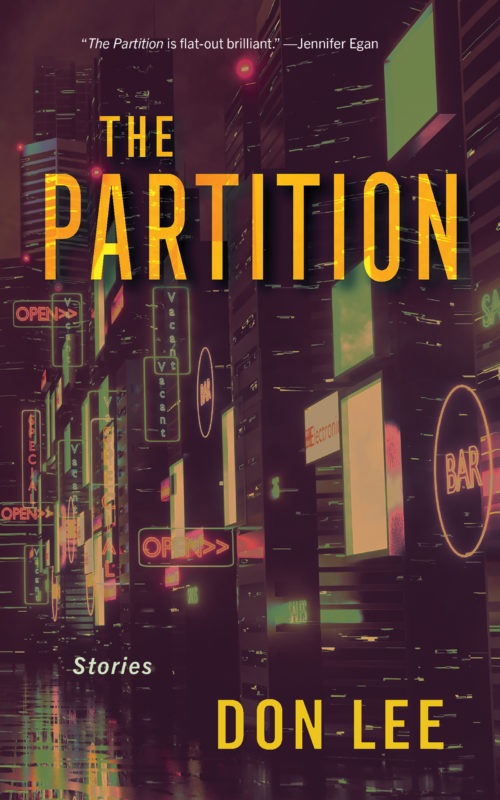 Your top five authors:
Your top five authors:
Alice Munro is one--I love every single thing she's ever written. As for the other four, I will name specific books rather than authors: John Williams's Stoner, which is the most beautifully heartbreaking book I've ever read; Kazuo Ishiguro's Never Let Me Go, which took me four tries to get into, but once I did, I was entranced (and then concluded it's essentially the same book as The Remains of the Day); Haruki Murakami's The Wind-Up Bird Chronicle, which begins with a prototypical Murakami protagonist making spaghetti, listening to music and receiving a mysterious phone call, but then takes off through literal and metaphysical wormholes that have more depth and punch than anything in his other books; and William Maxwell's So Long, See You Tomorrow, which starts out as a slim, conventional coming-of-age story, but then gets surprisingly experimental, incorporating the point of view of a dog.
Book you've faked reading:
Ulysses, James Joyce. The Dubliners was very accessible, A Portrait of the Artist as a Young Man was challenging but understandable, but then I got flummoxed.
Book you're an evangelist for:
The aforementioned Stoner by John Williams, but with a caveat: it's a really sad book, not for everyone.
Book you hid from your parents:
I never hid a book from my parents, but they did hide one from me. In high school, I was poking through my dad's closet and found a book with photographs of sex positions hidden in a manila envelope.
Favorite line from a book:
"Human speech is like a cracked kettle on which we tap crude rhythms for bears to dance to, while we long to make music that will melt the stars." --Flaubert, Madame Bovary.
Writer who influenced you the most:
Richard Yates. Before going to graduate school in Boston, I was house sitting my parents' condo in Burbank, Calif., and went to a used bookstore in town. I'd never heard of Yates before, but I came across Eleven Kinds of Loneliness and bought it. How could I resist that title? I then read everything of his I could find. I saw in his bio that he lived in Boston, and mused how great it'd be if I could meet him someday. My second night in Boston, I saw him in a bar/restaurant called Crossroads, and I introduced myself to him. He became a mentor of sorts. He was actually dismissive of my writing, but nonetheless he served as a model for me, destroying all the illusions I had that a life as a writer was glamorous, instead schooling me about the dedication and perseverance needed to be a midlist writer who had been forgotten and forsaken by readers, reviewers and the publishing industry (his books largely had gone out of print when he died), and yet who continued to write, day after torturous day. I wrote a piece about this in Electric Literature a while back.
Book Candy
Book Candy
Mental Floss looked up "11 element names inspired by folklore and mythology."
"Armenia's culinary history hides in a museum's manuscripts," Gastro Obscura noted.
"AAPI picture book recommendations from the teen reading ambassadors," courtesy of the New York Public Library.
Bookshelf featured the Curiosity-Go-Round bookcase, noting that a "it's a bookshelf, a desk, a table, a room, and also storage."
Rediscover
Rediscover: Rolando Hinojosa-Smith
 Rolando Hinojosa-Smith, "who created a fictional version of the lower Rio Grande Valley of Texas, where he was raised by Anglo and Hispanic parents, as the backdrop for 15 novels," died April 19 at age 93, the New York Times reported. "Dr. Hinojosa-Smith wrote stories in Spanish and English about race, power, class, money and war in Belken County, creating a vivid world that mirrored his own life." The National Book Critics Circle presented him with the Ivan Landrof award for lifetime achievement in 2014, calling him the "dean of Chicano authors."
Rolando Hinojosa-Smith, "who created a fictional version of the lower Rio Grande Valley of Texas, where he was raised by Anglo and Hispanic parents, as the backdrop for 15 novels," died April 19 at age 93, the New York Times reported. "Dr. Hinojosa-Smith wrote stories in Spanish and English about race, power, class, money and war in Belken County, creating a vivid world that mirrored his own life." The National Book Critics Circle presented him with the Ivan Landrof award for lifetime achievement in 2014, calling him the "dean of Chicano authors."
A professor of literature at the University of Texas at Austin for 35 years, Hinojosa-Smith began his Klail City Death Trip series in 1972 with Estampas del Valle y Otras Obras (published in English in 1983 as The Valley), which won the Premio Quinto Sol in 1973 for the best work of fiction by a Chicano writer. Three years later, he earned the prestigious Casa de las Américas Prize, which honors Latin American writers, for the novel Klail City y Sus Alrededores, which would be titled Klail City when it was published years later in English. The Valley/Estampas del Valle is available in a paperback bilingual edition from Arte Público Press ($16.95).


